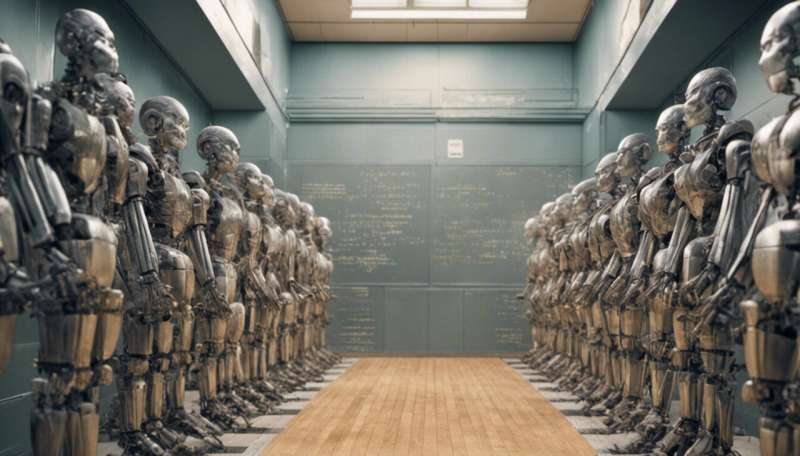Robots likely to be used in classrooms as learning tools, not teachers

Robots are increasingly being used to teach students in the classroom for a number of subjects across science, maths and language. But our research shows that while students enjoy learning with robots, teachers are slightly reluctant to use them in the classroom.
In our study, which saw staff and students interact with the Nao humanoid robot, teachers said they were more sceptical of robots being integrated into the classroom.
They preferred the robot to not have full autonomy and instead take on restricted roles in the classroom. The teachers also wanted full control over the robot. We observed that the teachers were in general unaware of robots and hence there was a technological bias associated with their opinions.
They said they did not trust the technical capabilities of the robot and wanted the robot to function and behave as a learning "buddy" of children and not as a teacher. We think this reluctance may have occurred primarily due to an uncertainty of how best to incorporate robots in the class, and a lingering concern that robots may eventually replace teachers.
This is despite research showing that robots are much more likely to be used as learning tools than as teachers in a classroom.
The students, on the other hand, were much more enthusiastic about a robot in their classroom, enjoying the human-like interaction.
However, they wanted the robot to adapt its behaviour to their feelings and display a wide range of emotions and expressions. Such fully autonomous behaviour will require further research and development in robotics.
For example, some of the children felt the robot's voice was unnatural and did not adapt to situations by changing tone or pitch.
The children preferred as natural behaviour from the robot as possible, even to the extent that they were untroubled by the robot making mistakes, such as forgetting. It was clear the children were imagining the robot in the role of their teacher.
How robots are currently used in the classroom
Numerous types of robots are being incorporated in education. They range from simple "microprocessor on wheels" robots (boebot), to advanced toolkits, (mindstorms) to humanoids (robots that resemble humans).
The choice of the robot is usually dictated by the area of study and the age group of the student.
Smaller robots or toolkits are particularly used to teach robotics or computer science. These toolkits can be physically manipulated allowing students to learn a variety of disciplines across engineering. However, the human-like shape of humanoids makes them easier to interact with, and for this reason are often used for language lessons.
Humanoids have the ability to provide real-time feedback, and their physical shape increases engagement. This often leads to a personal connection with the student, which research shows can help resolve issues related to shyness, reluctance, confidence and frustration that may arise in dealing with a human teacher. For example, a robot will not get tired no matter how many mistakes a child makes.
Humanoid robots are being widely utilised in classrooms in many countries including, Japan and South Korea.
Nao, Pepper, Tiro, IROBI, and Robovie, for example, are primarily used to teach English.
Telepresence – where a teacher can remotely connect to the classroom through the robot – is also being used as a way to teach students English. The teacher can participate in the classroom by being virtually present through a display mechanism. In some instances, the display is embedded in the robot's torso.
Western countries have been much more hesitant in acknowledging the integration of robots in classrooms, with privacy, developmental hindrances, the rise in unemployment and technical deficiencies stated as the major drawbacks.
Robots as learning tools, not teachers
Humanoid robots are still a fair way away from being autonomously situated in schools due mainly to technological limitations such as inaccurate speech or emotion recognition.
However, the intention of most researchers in robotics is not for robots to replace teachers. Rather, the design goals of most robots are to function as an aid in the classroom and to enhance the added value they can bring as a stimulating and engaging educational tool.
In order to facilitate the integration of robots in the classroom, we need to be able to provide appropriate interfacing mechanisms (software, hardware or even mobile apps), allowing the human teacher to control the robot with minimal training.
Provided by The Conversation
This article was originally published on The Conversation. Read the original article.![]()



















